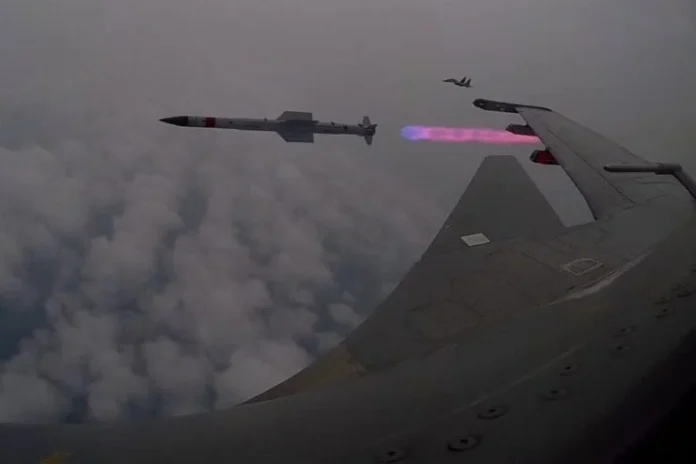NEW DELHI: In a boost to ‘Atmanirbhar’ in defence sector, India is getting set to conduct a wide range of tests of indigenously-developed advanced weapons, ranging from air-to-air missiles and anti-radiation missiles to smart anti-airfield weapons and long-range glide bombs, according to media reports.
The current month will see tests of at least three weapons, the ASTRA-1 (100-km range) and ASTRA-2 (160-km) beyond visual range air-to-air missiles (BVRAAMs) as well as the new generation anti-radiation missile (NGARM) Rudram-1 with a strike range of 150-km, the report said quoting defence sources.
The ASTRA-2 will undergo its “first live launch” from a Sukhoi Su-30MKI fighter after completion of its carriage and handling trials as well as “dummy drops”. The ASTRA-1, already under production by defence PSU Bharat Dynamics after the successful completion of its user trials, in turn will be tested for the first time with an indigenous seeker instead of the existing Russian AGAT one from a Sukhoi jet.
The IAF has already placed an initial order for 250 ASTRA-1 missiles, which flies over four times the speed of sound at Mach 4.5, to arm its Sukhoi fighters. The integration of ASTRA-1 with the Tejas and MiG-29 fighters is also concurrently underway.
DRDO is also planning to conduct the first test of ASTRA-3, based on the solid fuel-based ducted ramjet (SFDR) propulsion to enhance its range to 350-km, by the end of this year, the sources said.
The all-weather day and night capable ASTRA series of missiles, designed to detect, track and destroy highly-agile supersonic fighters packed with “counter-measures’’ at long ranges, will eventually replace the expensive Russian, French and Israeli BVRAAMs that are currently imported to arm IAF fighters.
Another test this month will be of the Rudram-1 NGARM that is designed to destroy a variety of enemy surveillance, communication and radar targets on the ground at a 150-km range after being fired from fighter jets.
DRDO is also developing Rudram-2 (350-km range) and Rudram-3 (550-km) air-to-ground missiles, which also have INS-GPS navigation with a passive homing head for the final attack.
“Trials of RUDRAM-2 should also begin soon. Rudram missiles are designed for suppression of enemy air defences (SEAD) from longer stand-off ranges to allow IAF strike aircraft to carry out their bombing missions without hindrance,” a source said.
Then, tests of smart anti-airfield weapons (SAAW), which are precision-guided bombs designed to destroy enemy runways, bunkers, aircraft hangers, radars and other reinforced structures at a range of 100-km, are also in the pipeline.
“These are 125-kg glide bombs, based on two configurations of either satellite navigation or electro-optical imaging infra-red seeker (EOIIR), carried on racks in fighters like Sukhois or Jaguars. A single Sukhoi can carry 32 such bombs. Separately, 1000-kg heavy calibre glide bombs, with a 80-km range, are also being developed,” the sources said.













